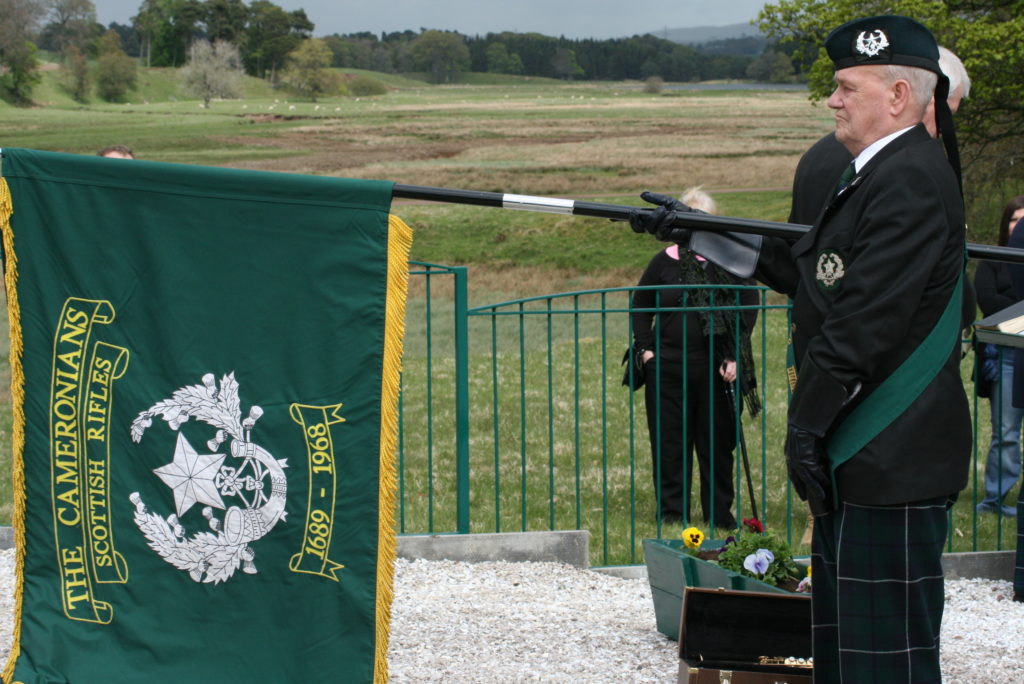The Regiment was formed on 14 May 1689 at the holm, on the banks of the Douglas Water in South Lanarkshire. Its first Commanding Officer was William Cleland whilst its Colonel was the 19 year old Earl of Angus, son of the Marquis of Douglas. The Earl’s statue overlooks the spot in Douglas to this day.
Within weeks of their formation The Cameronians saw action as regular soldiers at The Battle of Dunkeld in 1689.
For many years it was Scotland’s only Rifle Regiment and its dark green tunic marked it out as an elite formation.
During the First World War, The Cameronians raised 27 battalions
During the Second World War its battalions served in Europe and Burma.
In May 1968, as part of cutbacks to the British Army, the Regiment disbanded at a moving ceremony held at the same spot in Douglas at which it had been raised in 1689.
The Regimental Trust was wound up in 2015.
An iconic Regimental Memorial is located at the west of Glasgow’s Art Gallery and Museum at
The Cameronians (Scottish Rifles) Gallery in Low Parks Museum, Hamilton reflects over 300 years of the regiment’s story, from its Covenanting roots until disbandment in 1968 and beyond.https://www.slleisureandculture.co.uk/info/203/low_parks_museum
A further source of information about the wider history of the Regiment is the Cameronians (Scottish Rifles) and Families Association website. Over the pages of the site is recorded both the history of the regiment and the activities in which members of the association take part throughout the year.
On a personal note: My father, Douglas Haig McCreath, served with the 7th Battalion in North West Europe in World War II, as part of the 52nd Lowland Division. The 7th’s training and deployment were closely linked to that of its brother battalion, the 6th Cameronians.
The first major engagement that the 6th and 7th Cameronians took part in during WW2 was the the battle to liberate Walcheren in 1944. Part of this battle, involving an assault across the Sloe Channel, at Sloedam. It was code-named ‘Operation Mallard.
Each year the liberation is commemorated at a ceremony which includes the ‘Mallard Walk’. (Mallard Mars)’.
The ‘Mallard Mars’ is organised by a committee of the Liberation Museum at Nieuwdorp – Bevrijdingsmuseum Zeeland.
My family and I took part in the Mallard Walk and the related commemoration events in


